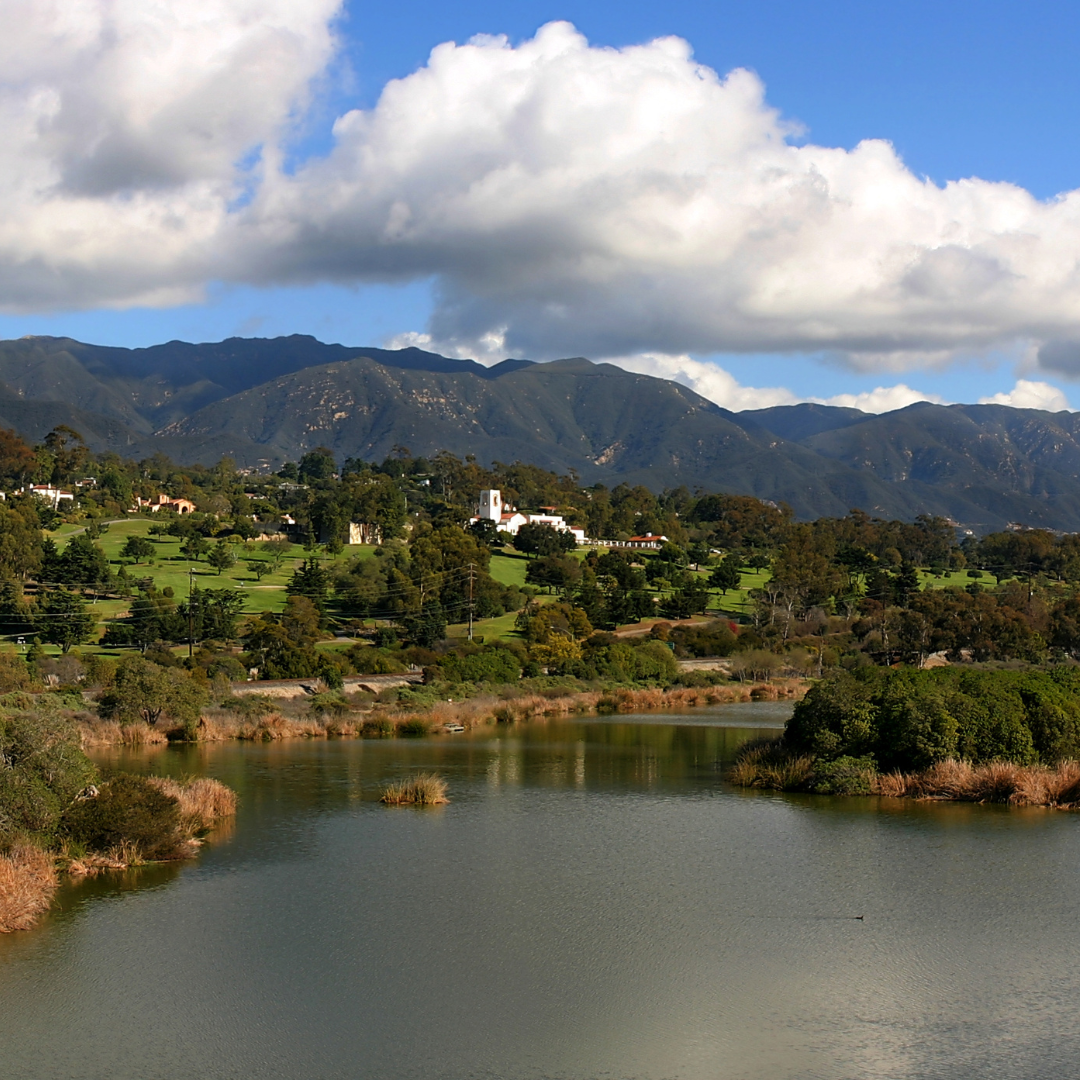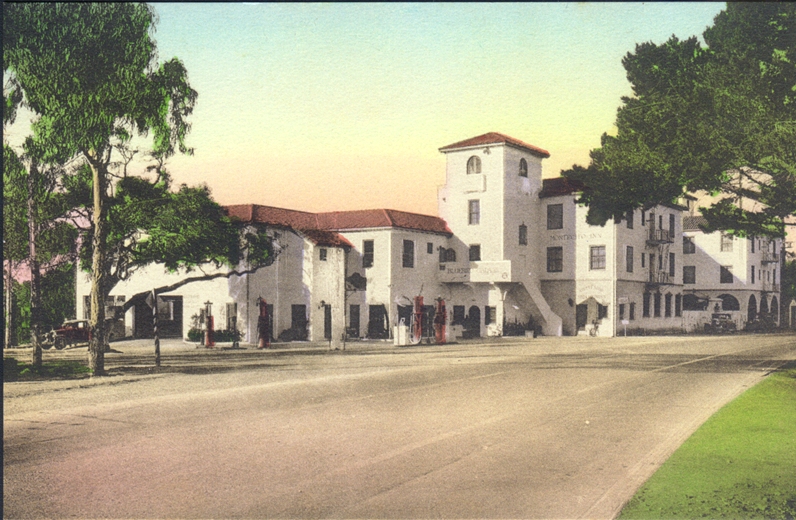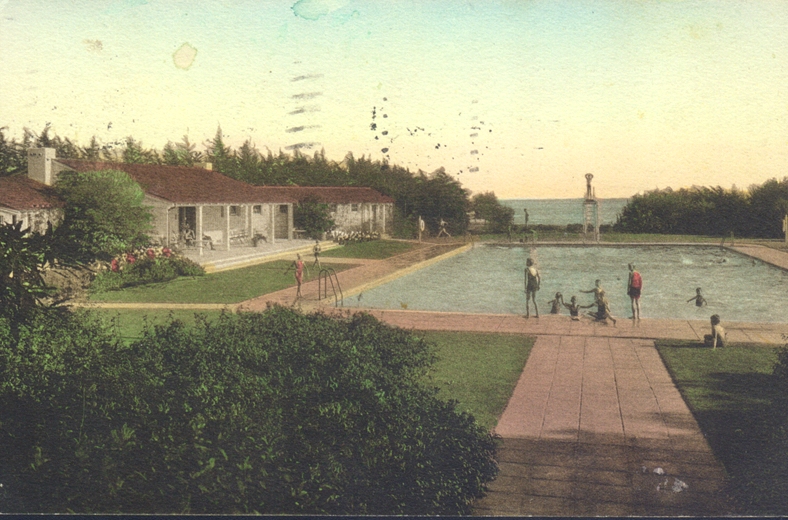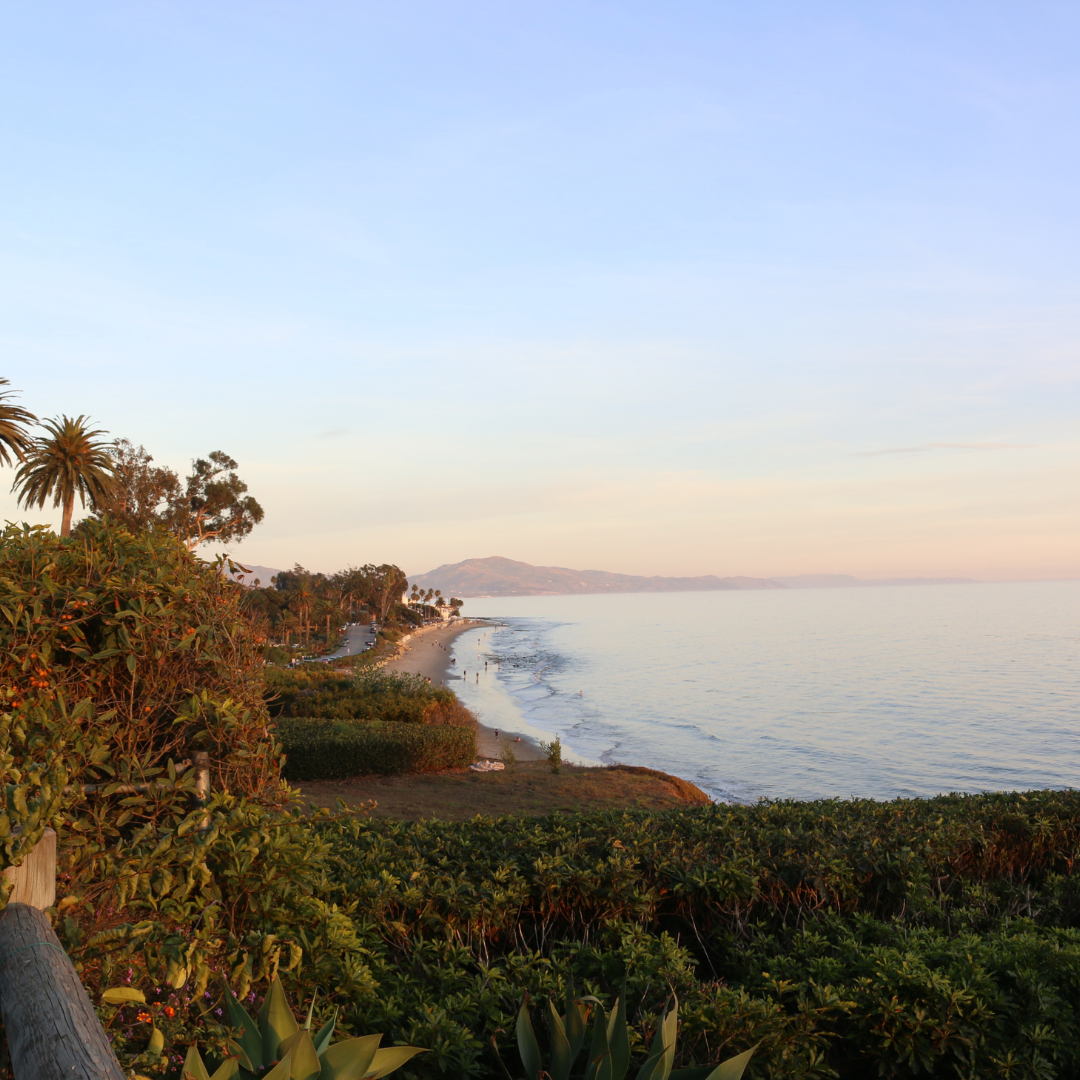Montecito
Padre Junipero Serra originally chose the location for the 10th California Mission near the intersection of East Valley Road and Hot Springs Road in Montecito neighborhood. Serra died before the Mission became a reality. His successor, Fermin Lasuen, established the Mission closer to the Royal Presidio for better protection. Montecito, which means “little woods,” swarmed with bears, wolves, Indian villages and various banditos that made it unsafe in the eyes of early settlers.

During the Spanish era, 1782-1846, payments to Royal Presidio soldiers fell as much as 20 years behind. The Spanish King in lieu of pay often granted free 50-acre parcels from the “Santa Barbara Pueblo Lands”. These plots became known as “Old Spanish Town,” and started where Hot and Cold Springs Creeks meet to form Montecito Creek and extend along East Valley Road to today’s San Ysidro Road. The founding families had names like: Romero, Robles, Dominguez, Juarez, Lopez, Olivas and Larenzana. Many of these families still live in Montecito today.

Before the Spaniards arrived, the Indians used the hot springs above Montecito for healing. In 1855 a very ill Wilber Curtiss came to Santa Barbara and was directed to the springs by local Indians. Finding the waters had worked a “miracle cure,” he staked a homestead claim for the spring site and became the first American settler. In 1862, he built the first of four wooden hotels at the springs, each successively ravaged by periodic forest fires, the last of which was destroyed in the 1964 Coyote Fire. The springs still exist, but are on private land and used primarily as a water source.

In 1857, Father Serra’s original mission site became an adobe chapel, the Carmelo Mission. In 1936, it was replaced by the spectacular Pueblo style Our Lady of Mount Carmel Church at the corner of East Valley and Hot Springs Roads.
By 1858, other Americans arrived following Curtiss’ lead. Newton Coats bought what is now Birnam Wood Country Club for 75 cents an acre, now worth more than $1,000,000 per acre! When the establishment of nurseries, orange groves and large formal gardens began in the 1860’s, land prices had risen to $50 per acre. Principal surviving historic adobes from this early era (1830-1860’s) still exist at 461 San Ysidro Road, 29 Sheffield Drive and at the San Ysidro Ranch.

In 1875, William Eddy, a Nevada silver miner, founded the Santa Barbara County National Bank. A year later, Josiah Doulton of the chinaware family bought 20 ocean front acres that he named “Ocean View.” When hard times fell, his wife took in boarders. The name for the popular site was changed to the Spanish, “Miramar” and later became the hotel of the same name. The hotel is presently being rebuilt. In 1927, the adjacent Biltmore Hotel was built.
A small American village took root around the Buell country store, now the Upper Village. In 1869, Protestant Church, All-Saints-By-The-Sea Episcopal opened, followed in 1886 by El Montecito Presbyterian Church.
In 1887, the Southern Pacific coastal route stopped in Montecito, later replaced by a stop in Santa Barbara and the post office, which also migrated to its bigger neighbor to the west. That same year, San Francisco banker William Crocker and his mother-in-law Caroline Sperry bought Rancho Las Fuentes “the fountains,” so called because of its springs and ponds, south of East Valley Road. He planted citrus and built a large lemon packing plant.
Brothers George and Fred Gould planted olive groves along a “trail to the beach,” now renamed Olive Mill Road. They later built a stone olive mill in 1893. The mill is now a residence at 200 Olive Mill Road.
With the advent of the train, Santa Barbara’s fame as a fashionable health resort grew, especially after the opening of the opulent Potter Hotel in 1902. From the 1890’s onward, the influx of wealth prompted luxury estates. These ultra-rich included such names as Rockefeller, Carnegie, Fleischmann, DuPont, Swift, McCormick and Bliss. This “migration of millionaires” carved out fabulous estates ranging from 30-200 acres of the Old Spanish Town.
Working-class also came to serve the wealthy and they settled into Old Spanish Town building dance halls, cantina, tavern, brothel and food store. Yet in 1914, many of these buildings were destroyed in the disastrous flood. Some exist today along East Valley Road.
In 1897, Middle-class Americans built a recreation center, Montecito Hall, and in 1908 built the Montecito Home Club. “The Peppers,” a popular elite social club at 430 Hot Springs Road, was built in about 1900. Its stage played host to Paderewski’s piano playing, the singing of Madame Schumann-Heink and the world debut of Santa Barbara dancer Martha Graham.
Sports followed class lines with workers preferring sandlot baseball or croquet and the more aristocratic tending to tennis, golf and polo. The Santa Barbara Country Club was laid out in 1894 between the Biltmore location and the Santa Barbara Cemetery. Moved inland in 1907, it became the Montecito Country Club. The former clubhouse was converted into a sumptuous personal residence – Miraflores. A later owner donated it to the Music Academy of the West. In 1928, country club members, including Max Fleischmann, left to form the Valley Club of Montecito on land south of East Valley Road on either side of Sheffield Drive.
Then, in 1968, Birnam Wood Country Club followed on the former Crocker-Sperry ranch. The old lemon packing plant was converted into the elegant clubhouse and became the center of Montecito social life. Tennis, also favored by the fashionable crowd, was centered at the Willis Knowles’ estate, now the Knollwood Tennis Club at 1675 East Valley Road.
In 1916, a 34-acre polo facility with grandstands, stables and a mission-styled luxury clubhouse went up on Middle Road. Polo declined with the onset of the depression, but the clubhouse was remodeled into a residence at 184 Middle Road.

The 1920’s were boom times for the “millionaire estates.” As many as 3,000 cars a day brought tradesmen to work on the mansions in progress. Foremost architects, such as George Washington Smith, with over 30 estates to his credit, Francis T. Underhill, Bertram G. Goodhue and Frank Lloyd Wright built the Italian marble palaces, Normandy castles, English manor houses and Cape Cod colonials that inhabit the byways and quiet lanes.

In 1930 Realtor® Harold Chase published his list of over 200 major estates. Among them were McCormick’s “Riven Rock,” Hammond’s “Bonnymeade,” Bothin’s “Piranhurst,” Murphy’s “Rancho Tijada” (since 1945, the Westmont College campus), Knapp’s “Arcady” (since subdivided), Peabody’s “Solano” (turned into the Center for the Study of Democratic Institutions), Gray’s “Graholm” (now the Brooks Institute of Photography), Mme. Ghana-Walska’s “Lotusland,” Gillespie’s “El Fuerides,” Bliss’s “Casa Dorinda,” Ludington’s “Val Verde” and Clark’s “Bellosguardo”.

The super-wealthy era ended in 1914 with the coming of income taxes, the depression, and the rising costs for a corps of servants. Royal and pseudo-royal snobbery departed and gilt-edged extravagances vanished. The changing economy ended the belle epoch. Montecito still attracts celebrities and show business personalities, captains of industry and finance, business and computer tycoons wishing to show off their wealth. Yet, there is less need to call attention to themselves; they would much rather get away than to see and be seen. Even the wealthiest Montecito residents would cringe at being referred to as Royal class.
Water is a problem in Southern California, and Montecito is no exception. To work around this issue, horizontal wells served for years and Juncal Dam was built in 1930 at the 2,200 foot level on the Santa Ynez River to provide more than 6,000 acre feet of water storage. The water system feeds 10 foothill reservoirs.

In 1948, the Montecito Protective and Improvement Association formed to keep out sidewalks, concrete curbs and gutters, advertising signs, and other threats to the rural feel of Montecito. Although relations with the city of Santa Barbara have always been cordial, Montecito has resisted annexation. The Montecito Protective and Improvement Association and many concerned citizens are powerful watchdogs against rampant development and commercialization.
From 1928 with a population of 3,000 to the year 2000 with a population of about 12,000, Montecito has maintained its independence and is one of the most desired – and envied – places to live in the world.
All Rights Reserved.




